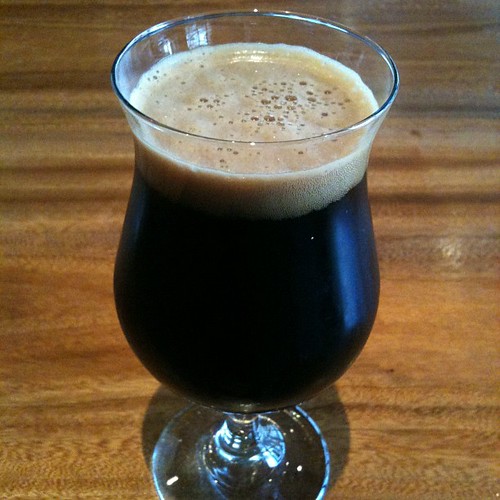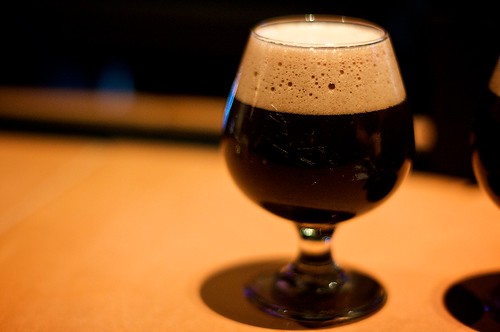
Grandfather Raven Imperial Stout
courtesy of keith_and_kasia
The British are not the only ones to fall in love with the Stout. The Russians went crazy for the black British brew as well. The problem, as the Czarists soon realized, was that the dark beer didn’t travel well. Luckily for the Russians, the British had experienced this problem before, in shipping ale to quench the growing British population in India. The British discovered that in order to allow ale to survive the long journey to India, the solution was to increase the preservative qualities of the alcohol and hop content of the ale, thus creating the Indian Pale Ale style. The British applied this same technique to satisfy the growing Stout fan base in Russia. The result was a thicker, hoppier, more potent style of Stout referred to as Imperial Stout, or Russian Stout.
In general, Stouts (particularly Dry Stouts) possess dark color and a light body with low alcohol content and hop presence. To help the Stout endure the voyage from London to Moscow, British brewers capitalized on the bacteria-killing characteristics of alcohol and hops. To achieve this, the quantities of malt and hops were increased from the standard Stout recipe to raise the amount of fermentable sugars and hop presence in the final product. The Alcohol By Volume (ABV) of Imperial Stouts can range between 8% and 12% as compared to 4% to 5% ABV of the average Dry Stout. The increased specific gravity from the additional malt gives the Imperial Stout a thicker mouthfeel. Hop flavor and aroma, which is often barely detectable in Dry Stouts, has a relatively high presence in an Imperial Stout.
Imperial Stouts are essentially Dry Stouts with an increased specific gravity and more hops. Similar to Dry Stout brewing, when creating your own batch of Imperial Stout from extract it is best to use light malt extract and focus on the specialty grains to give the brew its dark color and roasty flavor. Use around nine pounds of malt extract as the base. This increase in fermentable sugars will yield the higher ABV percentage. The specialty grains are similar to those used other Stout varieties such as the dark varieties of crystal and caramel malt, chocolate malt, roasted barley, and black malt. These specialty grains will produce a nice opaque, dark color and add roasty flavor.




